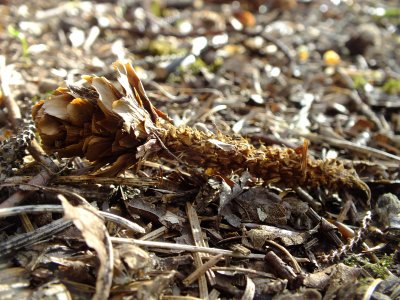Original Author: Lorna Hutchison
If you’ve yet to set eyes on a Scottish Red Squirrel, here’s a wee guide to help increase your chances!
Go north. Or south. Those of us living in the densely populated central belt have a choice to make. There are populations of red squirrels in the Borders and Dumfries and Galloway but personally, I’d head north to the coniferous forests of the Highlands where the reds still have a stronghold. You don’t actually need to go very far north, just enough to get away from the cities full of people and grey squirrels. Use our squirrel sightings map to see where you’re most likely to see red squirrels near you – https://scottishsquirrels.org.uk/squirrel-sightings/.
You don’t need to walk for hours into the depths of the largest forest ever, but do try to find a more secluded part of the forest, somewhere with fewer dog walkers and cyclists and horseback riders, just get that little bit further away from people in general. Once you find somewhere that’s a little off the beaten track, you’ll increase your chances of seeing not only red squirrels but also a range of other timid species such as deer, hedgehogs, beavers, badgers, pine marten, owls, jays, woodpeckers etc, depending of course on where you go and the time of day or year that you visit. Squirrels are less active during the winter but they do not hibernate so this means that you have a reasonable chance of seeing red squirrels year-round and the best time of day to see them is the morning. In the summer they can be seen throughout the day but again your best chance of seeing them is morning or early evening.
Once you’ve wandered off the beaten track, search for signs of squirrels. Although squirrels (particularly red squirrels) spend most of their time high up in the trees, squirrels love to run along fallen trees and large branches because from this slightly elevated position they can search more easily for food on the ground while keeping an eye out for predators in the sky. A fallen tree that is used often by squirrels may have scratch marks along the length of it or even collections of cones that have been nibbled at. Cones make up an important bulk of the red squirrel diet so where there are squirrels there is cone debris. Squirrels, like many animals, are left or right handed, and if you have a real eye for detail, you might even be able to tell which hand the squirrel used to eat that cone!

Another good sign of squirrels is to look for a “drey”. A drey is a squirrel’s nest and is usually several metres up a tree, positioned near the trunk. It will look like a ball of twigs, leaves and moss and may be home to a number of squirrels, or may be one of many homes for a single squirrel.
Be patient. Some people are lucky enough to have red squirrels visit their gardens on a regular basis, but if like me you’re not one of them, wherever you choose to squirrel-watch you’ll have to be quiet and patient because red squirrels are notoriously shy animals.
Record your sighting on our website! (www.scottishsquirrels.org.uk/squirrel-sightings) If you’re lucky enough to see a red or grey squirrel, dead or alive, we want to know about it!! At Saving Scotland’s Red Squirrels there are only a small number of staff covering very large areas and so we can’t be everywhere all the time. We need your help to know where the squirrels are so that we can do our jobs and save the Scottish Red Squirrel. Thanks for helping us and the squirrels and enjoy your squirrely day out!
